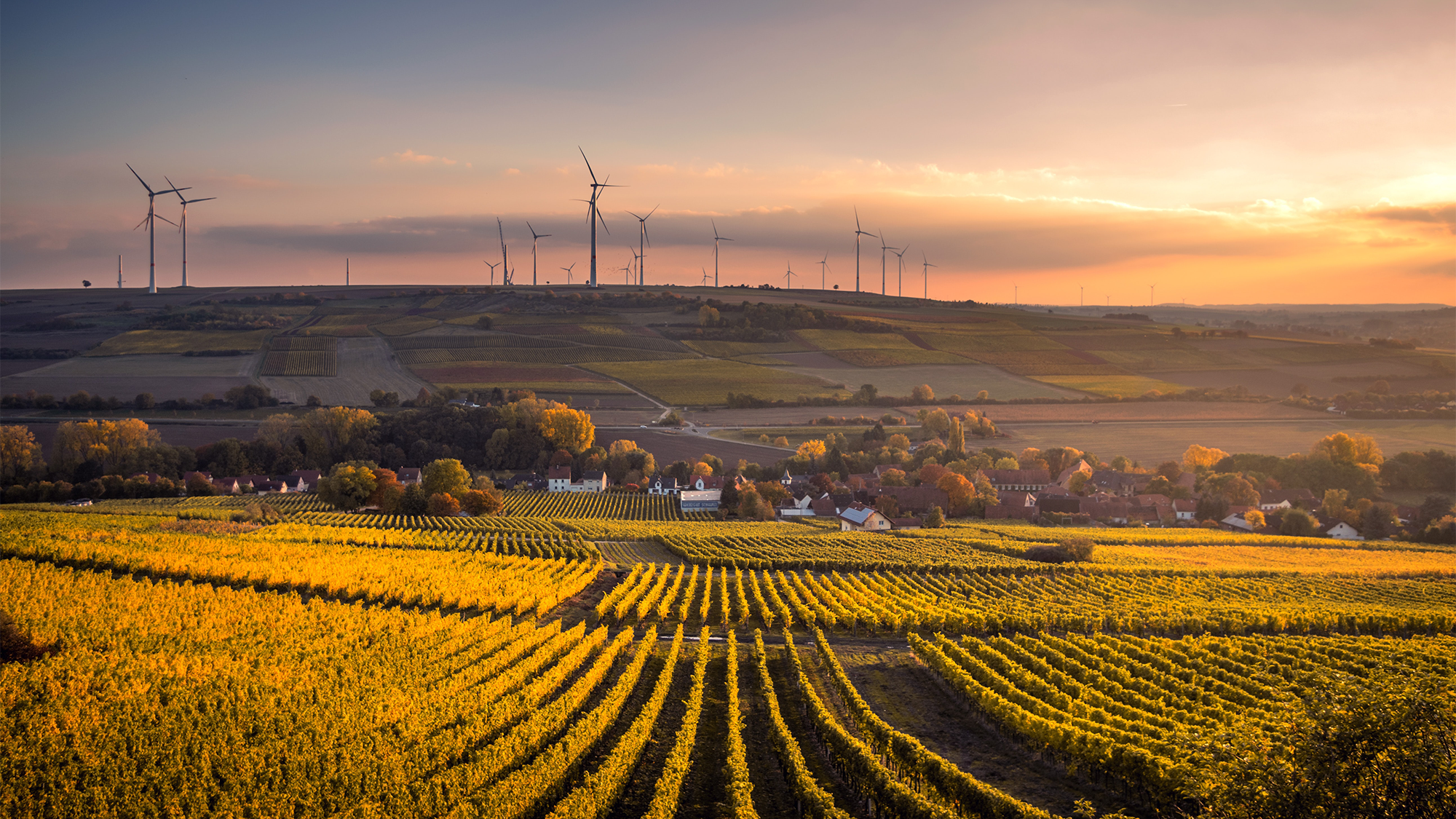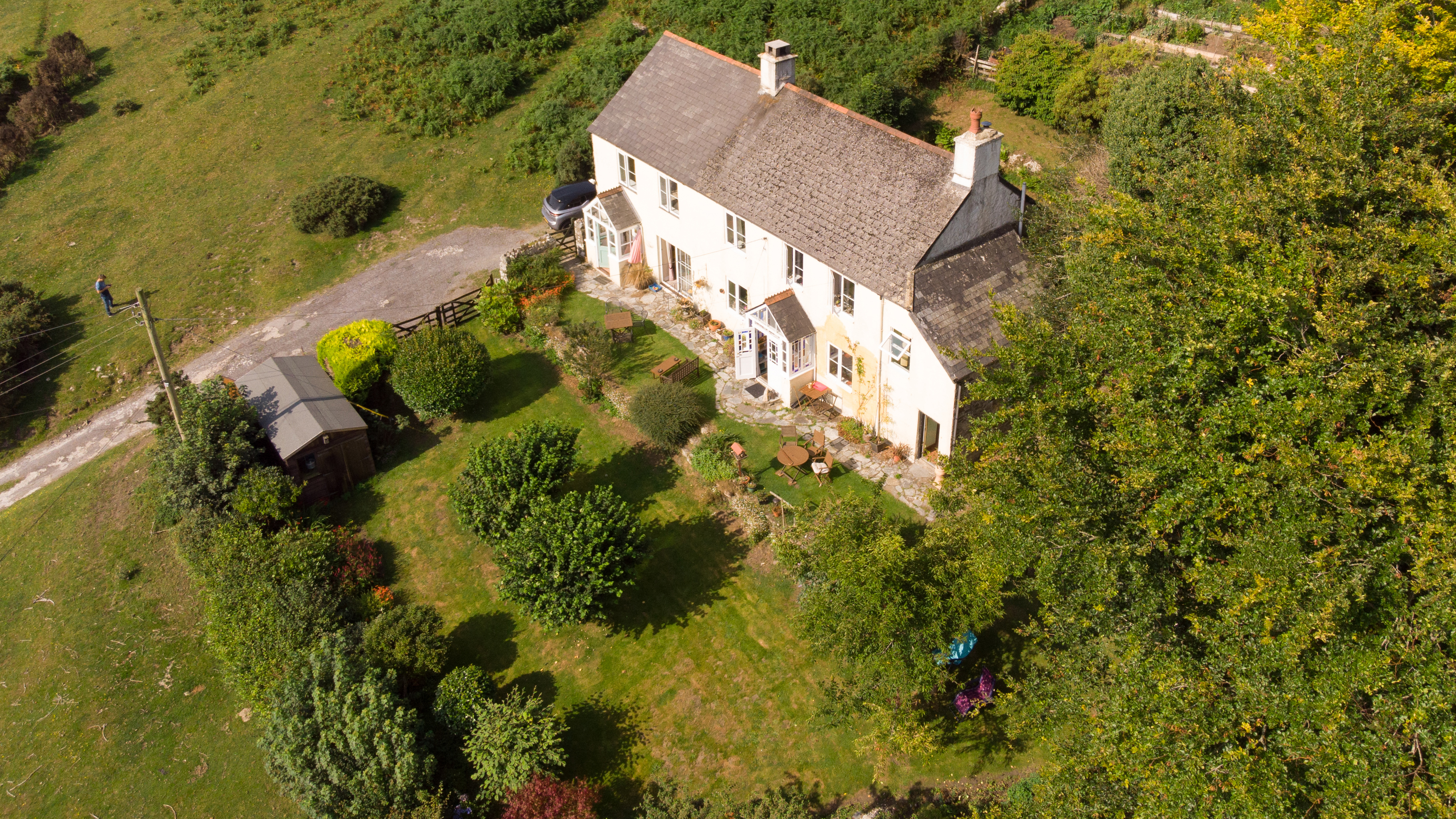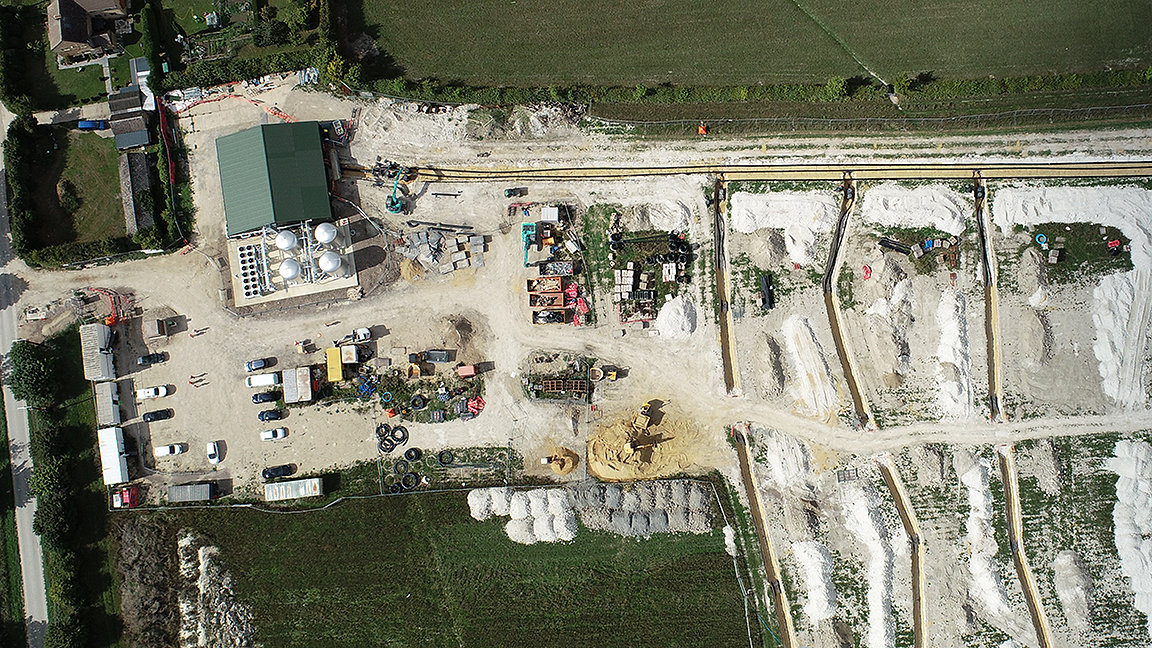
Energy centre and bore hole field under construction. © Bouygues Energy and Services
An estimated 1.1m homes in England are not connected to the gas network, and rely heavily on high-carbon fossil fuels such as oil, liquefied petroleum gas or electric heating.
Being beholden to heating oil companies, which vary the price per litre daily in response to global markets, makes budgeting almost impossible, and fuel poverty has long been an issue for low-income households using oil. This is in addition to the need for deliveries by tanker, huge above-ground tanks in the garden, and sizeable floor boilers in the house – as well as the risk of running out of oil in their tanks at a micro scale and due to political instability at a global scale.
One such oil-dependent community is Swaffham Prior, a small, rural village north-east of Cambridge on the edge of the Fens. Nearly half the 300 homes in this 1,980ha parish, which stretches from the River Cam to the July Course at Newmarket, are more than 100 years old.
Swaffham Prior is your typical, rural, English village – boasting more than 40 listed properties, including two churches and two windmills – as well as a conservation area, pub, village hall and primary school. Of the 200 homes in the core of the village, housing associations own and let around 50.
In the 2021 census, the village recorded a community of 858 people, with more than 52% of them being 55 or older. It would be no surprise if dependency on oil is one of the reasons younger people are not moving to Swaffham Prior.
So in 2017, after a chance conversation over a glass of wine, Heating Swaffham Prior, a community project initiated by the Swaffham Prior Community Land Trust (CLT) was born as a pioneering attempt to phase out fossil-fuelled heating in the village with a sustainable and greener alternative to oil.
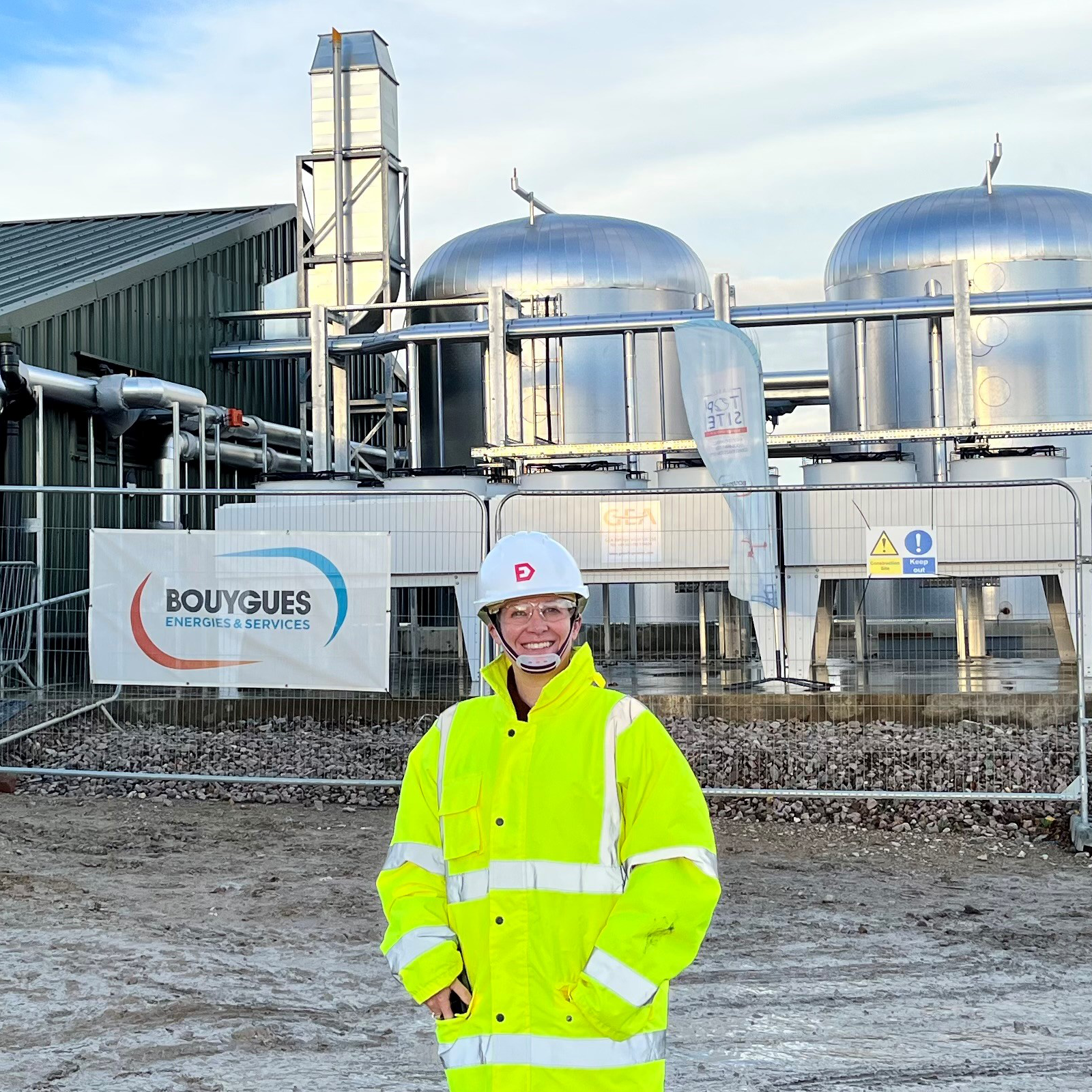
Emma Fletcher on site. © Bouygues Energy and Services
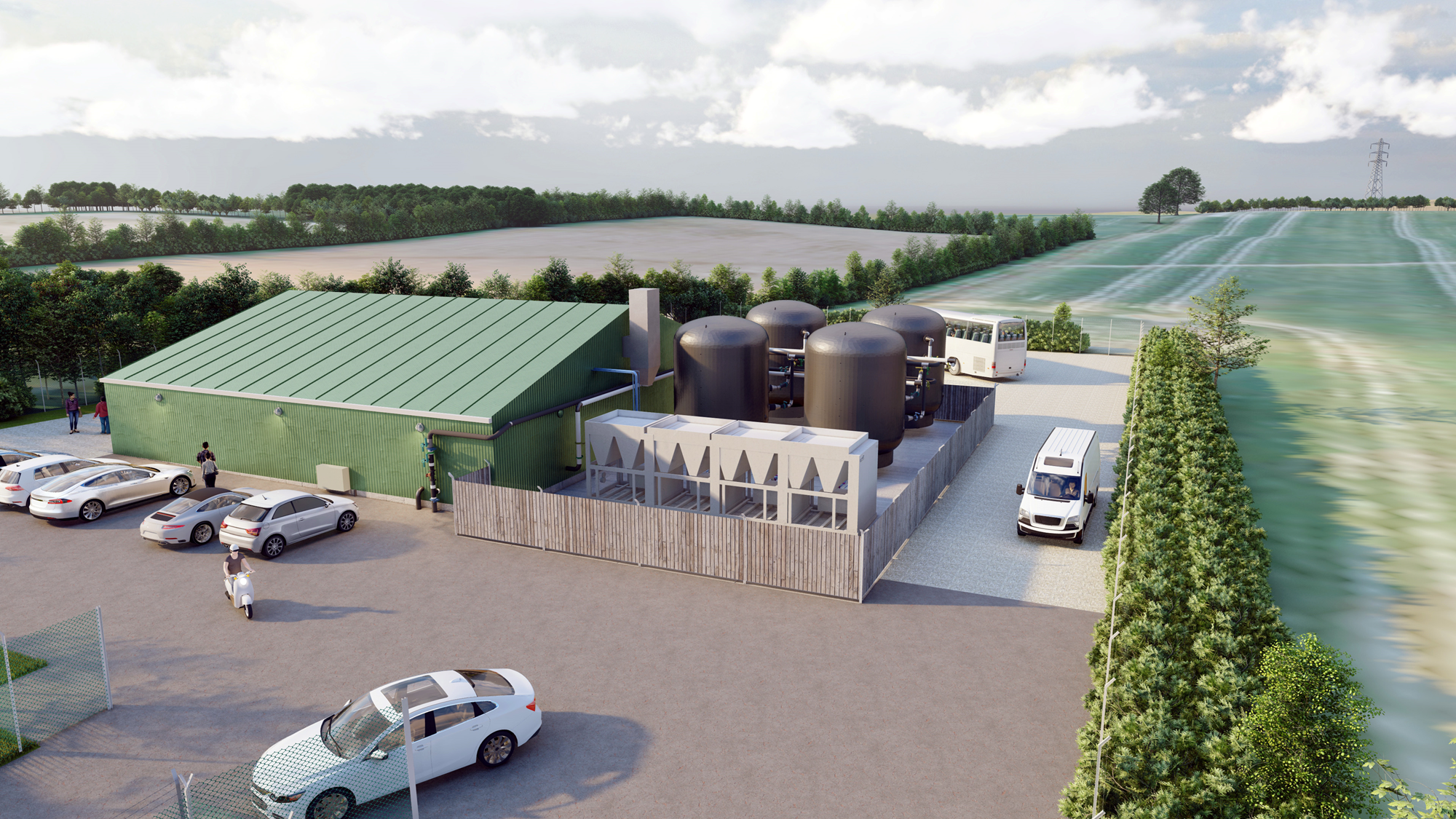
Schematic visual of the energy centre. © Bouygues Energy and Services
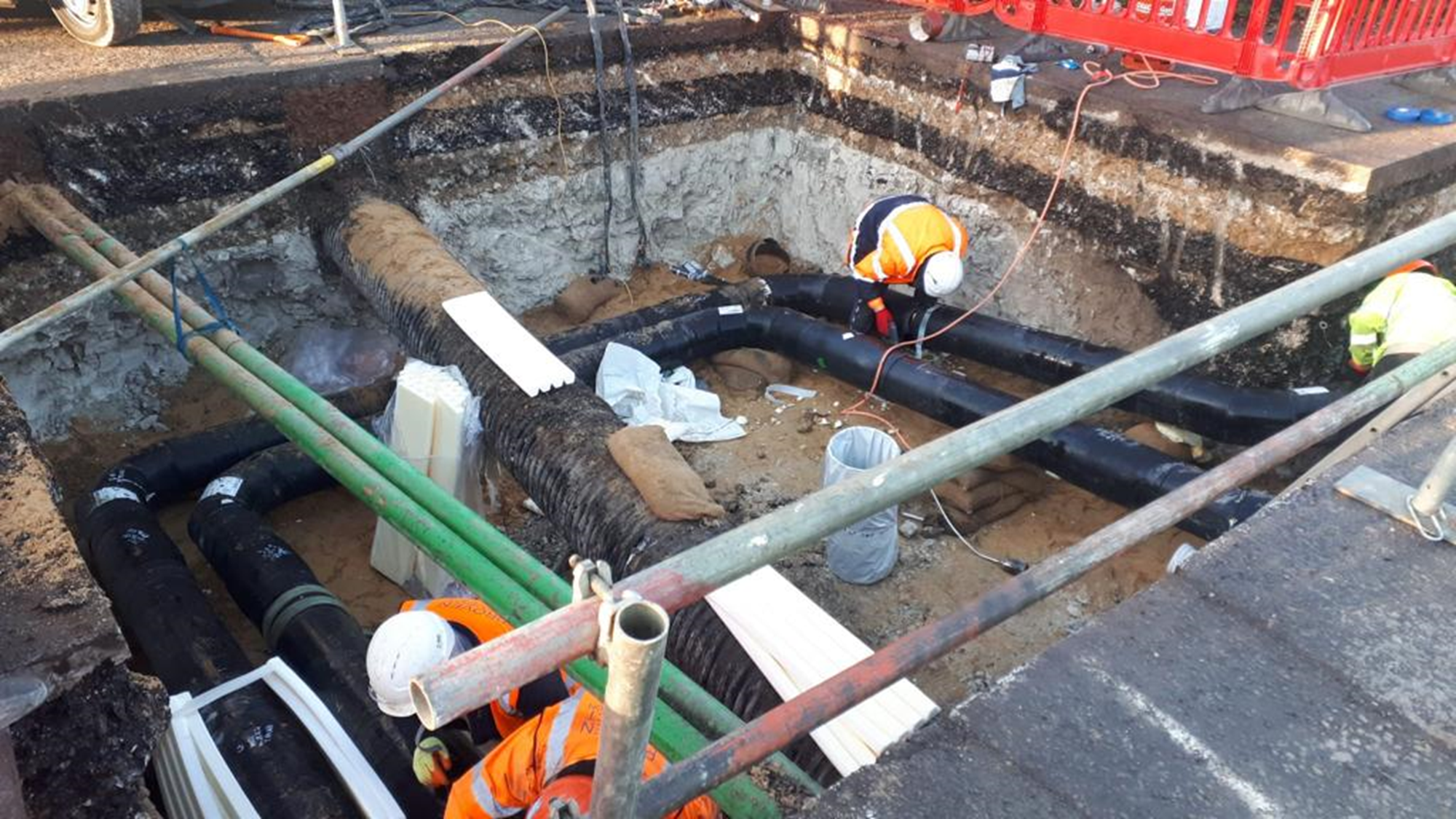
Putting in mainframe water pipes. © Bouygues Energy and Services
Why transition to district heating?
A heat network – also called district heating – is a distribution system of insulated pipes that takes heat, usually in the form of hot water, from a central source(s) or energy centre and supplies it to a group of buildings, which then extract the heat from the hot water on a building-by-building basis through a heat exchanger or heat interface unit (HIU) to warm their own internal water supply. Water from the heat network does not flow into the buildings – the HIU effectively acts as an umbilical cord permitting the flow of heat but not the mixing of water.
The government sees such networks as crucial for the UK to achieve its net-zero-carbon targets. They are one of the most cost-effective ways of decarbonising heating in built-up areas at a fair price to consumers, while supporting local regeneration. The Swaffham Prior CLT wanted to extend this concept to include off-gas rural communities as well. The CLT carried out a survey to gauge support in the village and received more than 150 expressions of interest which were used to support the initial grant application.
There are other obvious benefits to working at community scale.
- Roads only need to be dug up every 60 years to replace the main pipe network – that is, once in a lifetime, or if a pipe bursts.
- Customers can connect free or at a low upfront cost. This allows a just transition for young adults and the vulnerable who cannot afford to decarbonise their homes.
- There is greater take-up by households because of social pressure to do so.
- The energy centre can evolve as new technologies emerge, without further disruption to individual homes.
- There is less green bling so it's good for listed buildings or conservation areas.
- The HIU can work with existing central heating, and is the size of an average domestic gas boiler, which can be installed in a kitchen cupboard, unlike sizable oil boilers which often take up excess space.
- It can scale up and speed up decarbonisation across the UK.
To kick-start the project, in December 2017 the community land trust was awarded an initial grant of £20,000 from the Department for Business, Energy and Industrial Strategy's Rural Community Energy Fund, and it then appointed a consultancy team at BioRegional to explore all the options for the village.
The trust set the following criteria for the project:
- everyone could join free – regardless of financial position
- prices would be cheaper than oil
- nothing would be burned and there would be no large flues.
Identifying energy source, land and partners
BioRegional's final report in 2018 recommended either a biomass or ground-source energy centre. The CLT ruled out the biomass option, however, because it would entail burning fuel, and therefore did not match the community criteria of no large flues.
For many projects, especially in urban areas, finding a sizeable energy centre site for ground-source heat pumps is difficult – but this is not such a problem in rural communities.
Cambridgeshire County Council has a significant rural landholding near the village and had already established an energy strategy committing to work with communities interested in developing renewable energy projects and using its land assets to support this where appropriate.
It also had a small climate change and energy service team responsible for developing renewable energy projects on the council's land assets to generate income including:
- smart energy grids at its Park & Ride sites
- solar farms
- schools and public buildings retrofitting.
The CLT saw this as a perfect partnering opportunity. A tenanted 7ha field owned by the county council on the edge of the village and an old barn was identified as a possible site for the energy centre. It was agreed with the tenant farmer that a replacement building would be provided nearer the farmhouse and the land will revert into the tenancy once the bore holes are installed and the land reinstated.
The next stage of the project included working alongside council officers and their framework contractor Bouygues Energy and Services, which designed and built the network, and will run it on behalf of the county.
The county and the CLT put together successful bids for development grants in stages worth approximately £650,000 and secured a capital grant of £2.9m. The development grants supported securing planning permission, all the detailed technical studies to achieve legal compliance and the capital grant supported the heat network.
Grants were also used to monitor heat demand from different house types in the village, drill a trial bore-hole, carry out community liaison and home surveys and write a supply agreement for the supply of heat between the county and residents.
Cross party-political support from the county councillors and match-funding from the county council has also been essential throughout.

Inside the energy centre. © Bouygues Energy and Services
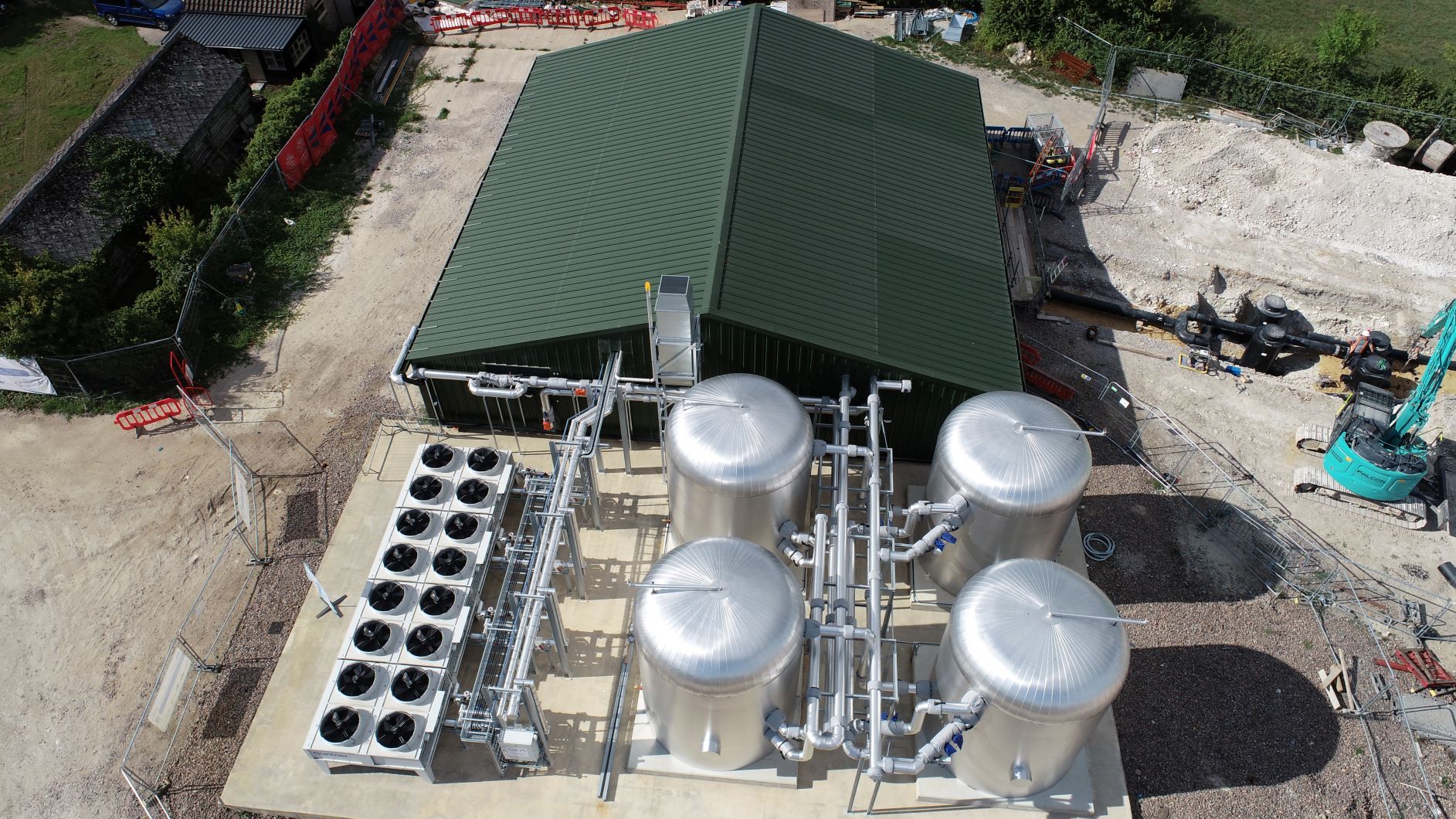
Swaffham Prior Energy Centre, with four 50,000-litre water storage buffer tanks. © Bouygues Energy and Services
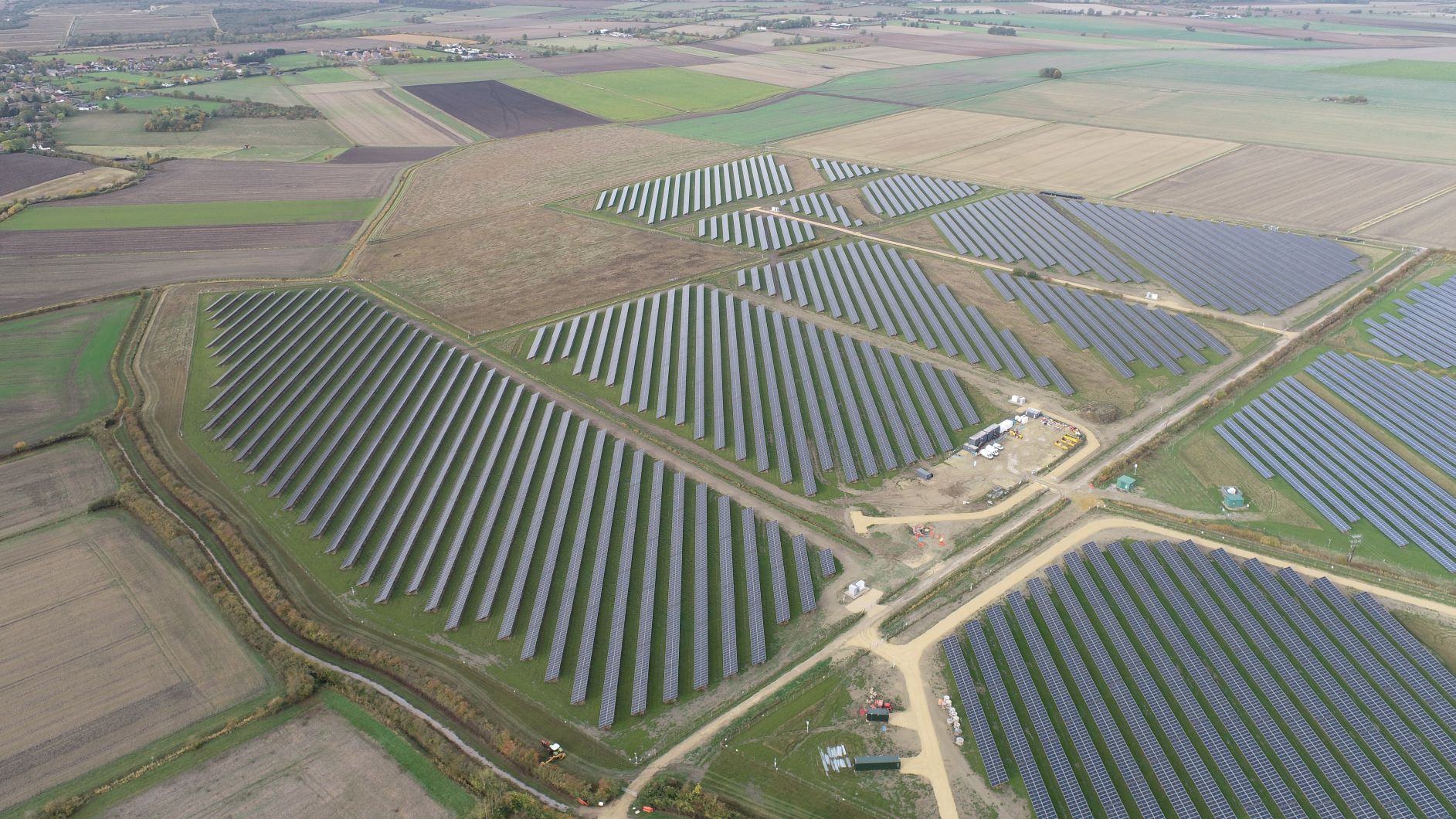
Cambridgeshire County Council solar farm, which will provide green electricity to the energy centre. © Bouygues Energy and Services
With development comes greater ambition
Over the following four years we clarified our original vision. It is uneconomic to supply every home in the village. We cannot justify the cost at the moment for long lengths of pipe to single homes that are in the outskirts, for example. The lack of density has in the past been the main reason for rejecting district heating projects in favour of high-density urban settings. However as other countries have proven – especially Denmark – it does not mean that it cannot be done.
We also became more ambitious, and what started as a low-carbon heat network has become zero-carbon as the electricity supplied for the ground- and air-source heat pumps will be via a private wire to the county council's solar farm. The first five were connected to the network in November and feedback indicates the homes are lovely and warm.
As built, the energy centre itself comprises:
- 108, 200m-deep closed-loop ground-source bore-holes
- industrial air- and ground-source heat pumps
- four back-up 50,000l water tanks
- private cable connected to an off-site county-owned solar farm to cover the day-to-day running of the heat pumps.
The 73–75°C water supply to the village from the energy centre, supported by two years' monitoring evidence, is the game-changer, because it means every home can join using its existing central heating system and radiators.
It also avoids the common issue that individual air-source heat pumps only get up to about 35°C, which is not sufficiently warm to heat listed homes. With multiple heat sources, the energy centre is designed to be highly resilient: in winter heat will come from the ground-source loops, and in summer from the industrial air-source system, giving ground heat time to regenerate.
The council owns all the assets including the energy centre, pipe network and HIUs and is the billing entity, while the community remains a key consultee. The bore-hole field will revert in the next few months to the former tenant farmer as chalk grassland combined with a rewilding project to enhance biodiversity – but no deep ploughing.
The price per unit of heat was fixed at the start of the development, and is index-linked to be less than the oil equivalent for five years; thereafter it will be indexed to electricity prices by year 10 of the project. Grants have also been secured for affordable homes and people on low incomes to improve insulation in their homes and thus reduce energy demand.

HIU installed pre-pipe installation. © Bouygues Energy and Services
Overcoming obstacles
However, it has not all been plain sailing. The construction of the energy centre and installation of the main pipework through the village took just over a year, and the community's patience and resilience was critical, especially when the temporary traffic lights failed and the village was gridlocked.
People's other concerns included:
- whether or not the technology would work
- the cost of the project
- the level of grant funding received.
Residents were also concerned about some issues that were easy to resolve such as:
- access to driveways
- state of a footpath during development
- disruptions to bin collection.
Throughout the project timely and clear communication was key to ensure people felt confident their issues were being taken into consideration.
Over the next six months, we will roll out all the home connections. The target is to connect 160 further homes by the end of the year, and there is a five-year plan for home connections anticipating that more will join the network once their boilers reach the end of their economic lives or when properties change hands.
What has been fascinating to observe is that it is very hard for people to change their habits. A minority who can afford to make changes to their home have done so. But there are people who can afford to and don't, people who want to but cannot afford to, and a large group of people who are so focused on surviving that they cannot even consider it.
But no one has explained to private homeowners that they are going to have to invest significant money into their own homes in any case, to improve environmental performance and meet global targets for carbon reduction by 2050. A recent government consultation Phasing out the installation of fossil fuel heating in homes off the gas grid also proposed phasing out all oil boilers by the end of 2026.
In the meantime, it is difficult to encourage people to take what they consider a leap of faith, to understand that oil boilers will not be here forever and that every home must be adapted as part of the global effort to address climate change.
There is no straightforward solution for oil-fuelled communities – but district heating projects should be an option, as Swaffham Prior proves.
Emma Fletcher MRICS is chair of Swaffham Prior Community Land Trust and regional development director at Hyde Housing Association
Related competencies include: Economic development, Energy and renewable resources, Sustainability
Further information: More on district heating
RICS UK Rural conference
27 June ¦ 08:00–16:30 BST ¦ Royal Agricultural College, Cirencester
This year's conference will take place in person for the first time since the pandemic, covering a range of issues associated with the transition in agriculture such as sustainability, innovation in the rapidly changing carbon market and empowering environmental change. It is a way for rural chartered surveyors to stay informed, develop new skills and connect with their peers.
Key presentations include:
- government update on agricultural transition
- biodiversity net gain
- energy and property
- legal update on land use and management.
Book your place.
